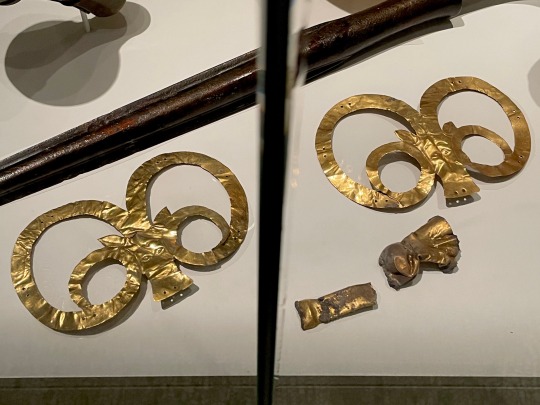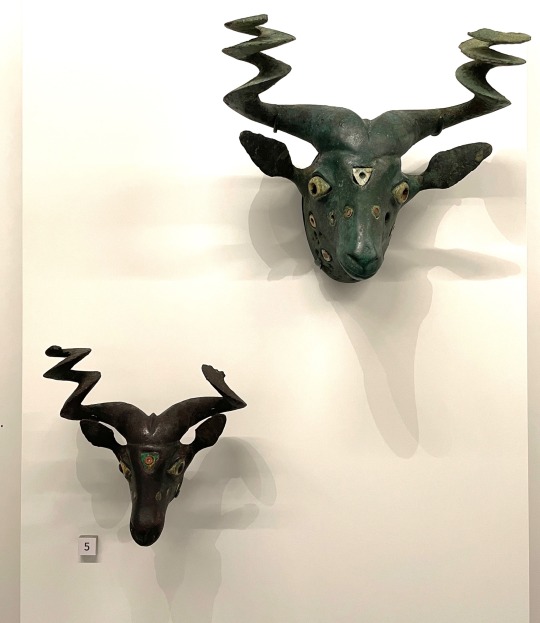#middle eastern metal
Explore tagged Tumblr posts
Text

and here we have some more black metal which I swear is something I'm not obsessed with and don't post about too much. this one's got an eastern esoteric sort of theme going on with a bit of instrumentals and melodies to match. links at bottom of post!
featured artists: Melechesh, Al-Namrood, Darkestrah, Nightbringer, Order of Orias & Arallu
𓋹 spotify 𓋹 apple 𓋹 youtube 𓋹
#music#blackened folk metal#black folk metal#melodic black metal#folk black metal#symphonic black metal#sympho black metal#middle eastern folk metal#eastern folk metal#middle eastern metal#eastern metal#eastern black metal#middle eastern black metal#black metal#bm#metalhead#headbanger'#true metal#metal#playlist#compilation#satanic#occult#dark
9 notes
·
View notes
Text
EP Review: Dialith - Alter (Self Released)
Connecticut based symphonic power metal band, Dialith, are back with a brand new EP titled Alter, due for release on the 5th of April. Dialith is an epic symphonic power metal band from Danbury, Connecticut. Formed in 2015, Dialith made an impact with their 2019 debut album, Extinction Six. Blending epic orchestral arrangements with enrapturing melodeath riffs, Dialith aims to breathe new life…

View On WordPress
#Alasdair Wallace Mackie#Alter#Brandon Sanderson#Connecticut#Cullen Mitchell#Dialith#independant artists#Krista Sion#Mark Grey#Middle Eastern metal#Mistborn#New Metal#New Music#Power Metal#Self Released#Symphonic Metal#Symphonic Power Metal
0 notes
Text
[Album of the day] Ethereal Sands - From Dust To Stone
Aubagne, FRA || 2024
[Genres] industrial metal, post metal, prog metal
[Themes] Middle Eastern metal
[FFO] Nile,* Akhenaten
[Thoughts] The most recent of many projects by Kosm, whom I know from a free Weedian** release: Bong of Nothingness - Space Datura (instrumental stoner doom).
o()xxxx[:::::::::::::::::> o()xxxx[:::::::::::::::::> o()xxxx[:::::::::::::::::>
* Other relevant posts.
** WEEDIAN's page || a post where I talk about them
o()xxxx[:::::::::::::::::> o()xxxx[:::::::::::::::::> o()xxxx[:::::::::::::::::>
#album#full album#album of the day#Bandcamp#music#underground artist#underground music#underground metal#industrial metal#post metal#prog metal#middle eastern metal#nile#akhenaten#kosm#weedian#bong of nothingness#space datura#ethereal sands#from dust to stone#french metal
0 notes
Text
#MetalMonday:


Silver Ram’s Head Rhyton, c. 700-600 BCE, from Ziwiye (Iran)
On display at Penn Museum
Read more about this piece here:
#animals in art#museum visit#ancient art#Iranian art#Middle Eastern art#Near Eastern art#rhyton#drinking vessel#metalwork#silver#ram#Penn Museum#Metal Monday
221 notes
·
View notes
Text

Box
ARTIST: Artist unrecorded
DATE: 20th century
PLACE MADE: Historic Palestine, Middle East/West Asia, Asia
MEDIUM: Silver
9 notes
·
View notes
Text
Been listening a lot to this CD I got brand new and sealed for $1 at the charity shop a few weeks ago… Welcome to the Downside by Speak No Evil… it’s really good and high quality music!! But it seems like they dropped off the face of the earth after this album. I’ve been trying to find some more info about it, and I found out that this album, which is HEAVILY critical of the US government, came out in August of 2001… I wonder if that had anything to do with it…
#the music itself also has fairly heavy Middle Eastern influences…which is cool I’ve never heard that in nu metal before…#but probably didn’t win it any favors in the absolutely insane culture of Immediately Post-9/11#radio stations wouldnt even play shit like Crash Into Me by DMB lmao#so these dudes were probably doomed via unknowingly choosing the worst time in history to drop an album bashing the US government
2 notes
·
View notes
Audio
Listen/purchase: El Ashya Ma3dan (Things Are Metal) by chusss - The Visitor
#bandcamp#heavy metal#oriental metal#middle east#middle eastern#egyptian#oriental rock#instrumental metal#instrumental rock#instrumental guitar
2 notes
·
View notes
Text
#akhenaten#brahma astra#incantations through the gates of irkalla#black metal#death metal#experimental#middle eastern#folk#music#egypt
8 notes
·
View notes
Text
normally i have a pretty easy time with first drafts of Characters. but i fucking hate Gier's now that I'm not exhausted and a Teensy bit off my shits, and I'm not even going to post the first draft of Maalik's bc they came out so bad.
I'm going to give them both another shot tonight tho and i might just ditch full body designs and figure out their faces first.
#like i have Such a strung image of Maalik#Or like strong by aphantasia standards#Hes a big man in a self propelled wheelchair#the metal bars and such are wrapped in nice ribbon because thats easier to replace when it rots than the frame itself.#he uses it because he gets winded easily and doesn't have a lot of range so Gier does a lot of pushing. They've modified the handles to#just be bare metal bars with cheap bike grips over them so they can be replaced easily.#Maalik is a stylish guy and tends to like dressing up. a button up and slacks is his shorts and flip-flops#white tie is his preferred style. but he tends to go for a lot of bright colors and prints#He has a dark beard and wears a lot of hats. I cant decide if hes black or indian I dont know Why but those are the two sorta ethnicities#indian into the middle east. Just everything from the arab subcontinent up to about turkey and over to eastern india. Thats Kinda#where his vibe feels like it is.#Like obviously hes very based on a sorta modernized big band boss guy. Someone who wouldve done numbers during the harlem Renaissance#and then for Gier.#hes long#and moldy#and thats it.#Ive got nothing but long and moldy
7 notes
·
View notes
Text
Levantine Week Day 2: Zalaam - Bottomless Black Hole

Each month CDM spends a week looking at the music of a specific country or region that we believe deserves more attention. This month we have chosen to look at the music of the diverse region known as the Levant, covering music from multiple countries.
For day 2 of Levantine Week we turn to Palestine, where Sidney looked at the great sophomore record of one man project Zalaam. Skilfully walking the line between raw, depressive atmosphere and surprisingly uplifting instrumentals, Zalaam translated the lived experience of some truly extreme and horrifying conditions to music. Bottomless Black Hole is a tour deforce demonstrating that the DIY ethos of black metal is alive and well.
#black metal#atmospheric black metal#palestinian music#palestinian art#raw black metal#middle eastern music#cave dweller music#underground music#extreme metal#heavy metal#Bandcamp
2 notes
·
View notes
Text
I JUST GOT THE BEST RANDOM IDEA EVER!
My imagination is vivid and listening awhile back, that thought popped in my head. Why? The peyote scene in Beavis and Butthead do America and my joke about putting my foot in my mouth only to trip off the fungus! later (communication as the sign of communicative duality ,♊ is...✍️😤🤌)
I see the song as Dead eats the pastry, the fungus, bacteria, or bad cooking skills start an acid-like trip and by the la-la-la-la part, it gets all trippy. The "JOIN US" would kick off the real visuals too with semlor, dark spirits, even the full moon being one, taunting his flight through the woods!
At the end, Dead wakes up on the floor looking hungover, there's that semla, and there's the trash.
It was too good not to share!
#morbid band#morbid#black metal#per yngve ohlin#dead mayhem#lol#why not#animation#i hope his spirit hears of this one day#ALMOND PASTE NOT MARZIPAN MR. JENS! LITTLE BIT#mayhem band#øystein would have a song called delicious kebab#he had good taste#middle eastern cooking is#🔥🔥🔥🔥🔥🔥🔥🔥🔥🔥🔥🔥
0 notes
Text
Melechesh /// Rebirth of the Nemesis (Enuma Elish Rewritten)
Lla Tchaf Lla min Tiamat Enuma Elish is re-written
1 note
·
View note
Text
"Sahara"ORPHANED LAND

1994年に本作でもってデビューしてきた時、このバンドは局所的ながらかなりのセンセーションを呼んでいたように思う。イスラエル出身というだけでも異例なのに、比較対象が見当たらないこの音楽性。中近東メロディの導入は、部分的であればそれまでも決して珍しくはなかったのだが、それを全編に配してヘヴィメタルとなると、確かに類すらも見なかった。
ただそれゆえに、当時特に某誌においては少々小難しそうなバンドとして紹介されてしまった感がある。言うまでもなく中近東のメロディに小難しい要素など微塵もないし、理解できたから偉いというほどでもない。基本は構築主義のデス/スラッシュメタルであり、そうした音としての完成度の高さに見るべきところがある。基本、ピュアなメタルヘッズ向けのバンドだ。カッコイイと思うよ!
0 notes
Text
My eyes wide shut, jumping in the void Falling so fast I touched the ground Not a solution, just an escape I might awaken again
At least I have tried Made all I can Tried to fit the frame Incorporate the game
I never could incorporate this frame, and I know I can run, but never find the way out of here
Make up every lie, even when you're right Could not make it right Give up who I am
I never could incorporate this frame, and I know I can run, but never find the way
I never could incorporate this frame, and I know I can run, but never find the way out of here
#Myrath#Wide Shut#Tales of the Sands#Music#Heavy Metal#Progressive Metal#Middle Eastern Folk Metal#Tunisian Band#Tunisian Metal#Oriental Metal#Spotify
1 note
·
View note
Text
#TwoForTuesday at the Penn Museum:

1. garment decorations, Tepe Hissar (Iran), c. 2300 BCE, gold.
“These striking gold appliques in the shape of a ram's head would have been secured to clothing through the holes pierced around their edge.”

2. goat heads, possibly Fara (Iraq), c. 2475-2300 BCE, copper alloy, shell, limestone.
“These heads were cast in copper and inlaid with shell and colored limestone. The powerful corkscrew horns capture the majesty of a wild markhor mountain goats.”
#Two for Tuesday#Penn Museum#museum visit#pairs#ram#goat#markhor#decorative arts#historical costume#precious metals#gold#copper#sculpture#ancient art#Middle Eastern art#animals in art
19 notes
·
View notes
Text
Lacuna Coil - Our Truth 2006
"Our Truth" is the first single by Italian gothic metal band Lacuna Coil from their fourth studio album Karmacode. The song was also featured on the soundtrack to Underworld: Evolution, and the games Rock Band Unplugged, Rock Band 2, Guitar Hero World Tour and Rock Revolution (this one uses a cover version). It was a Top 30 Active Rock single on the Billboard Charts. Lyrically, the song delves into denying and forgetting one's past by creating a new truth as time goes by.
Karmacode has a more prominent Middle-Eastern sound compared with Lacuna Coil's previous releases. A shamisen, a Japanese string instrument, is featured in the opening and ending of "Our Truth" and a faint sitar can be heard during the verses. The music video was nominated for the "Best Group Video" category at the Italian Premio Videoclip Italiano.
"Our Truth" received a total of 80,1% yes votes!
youtube
642 notes
·
View notes